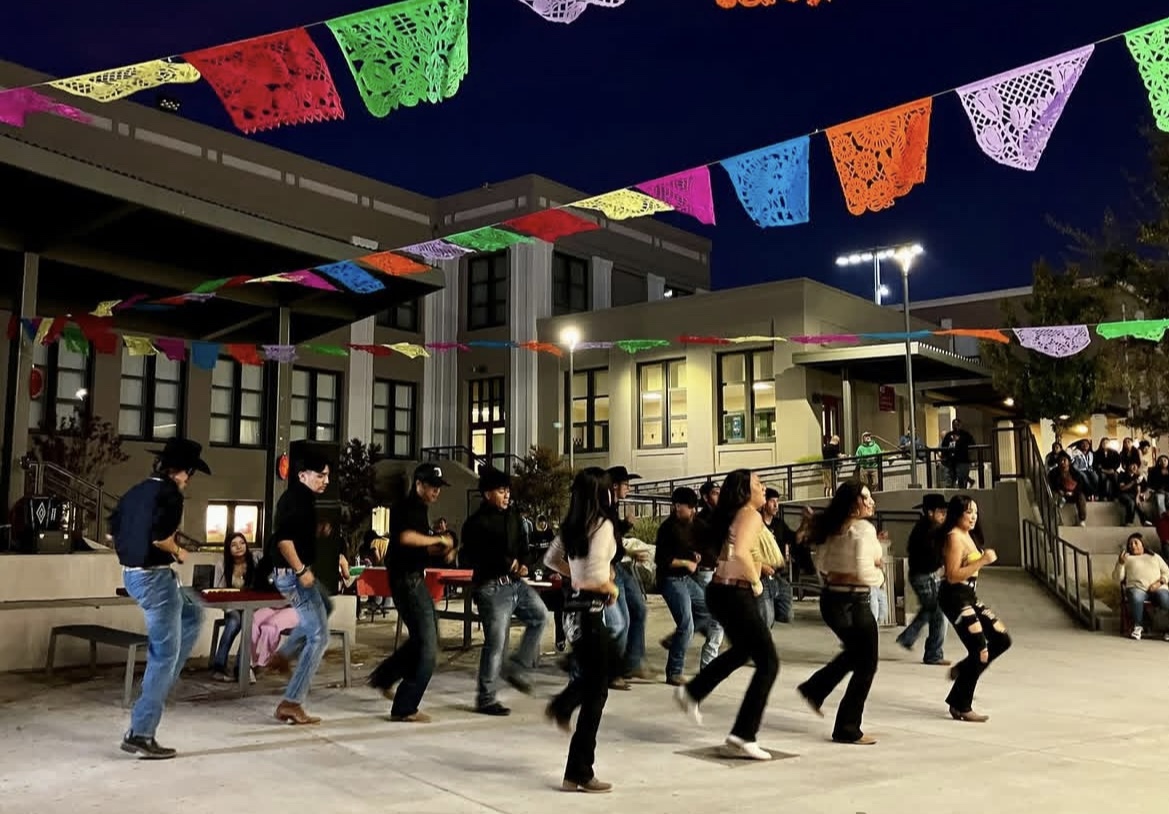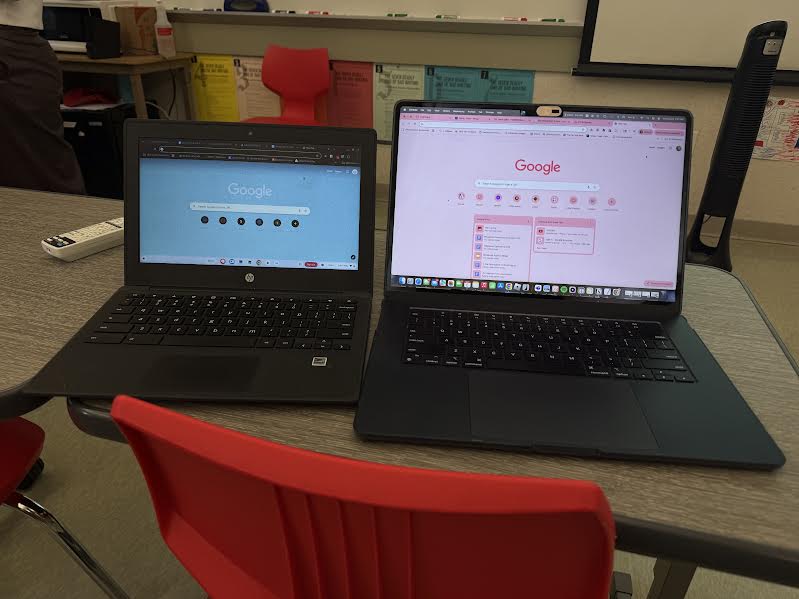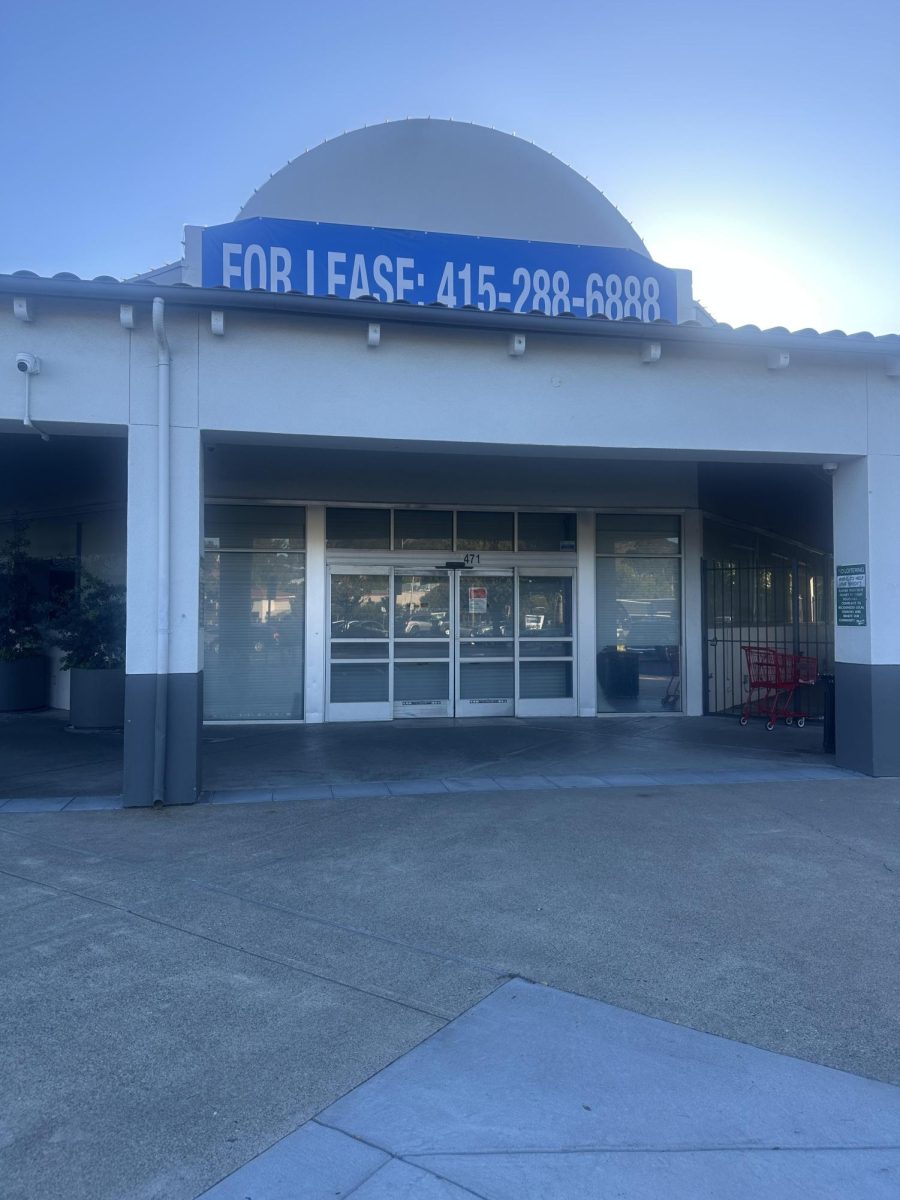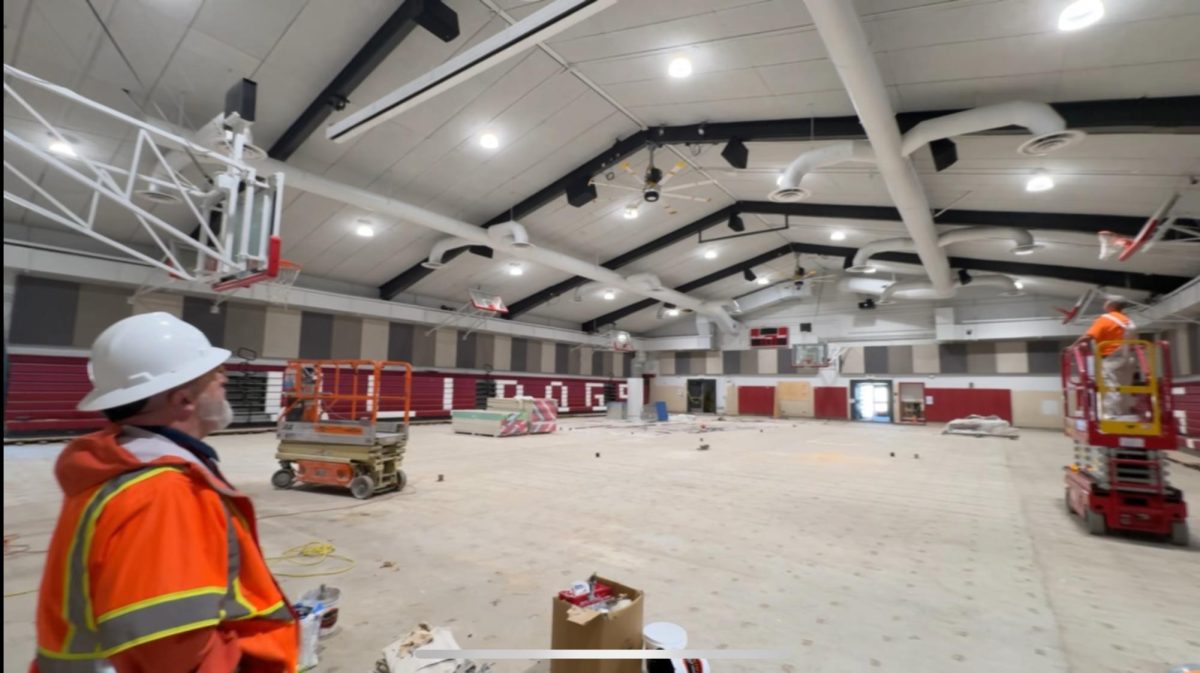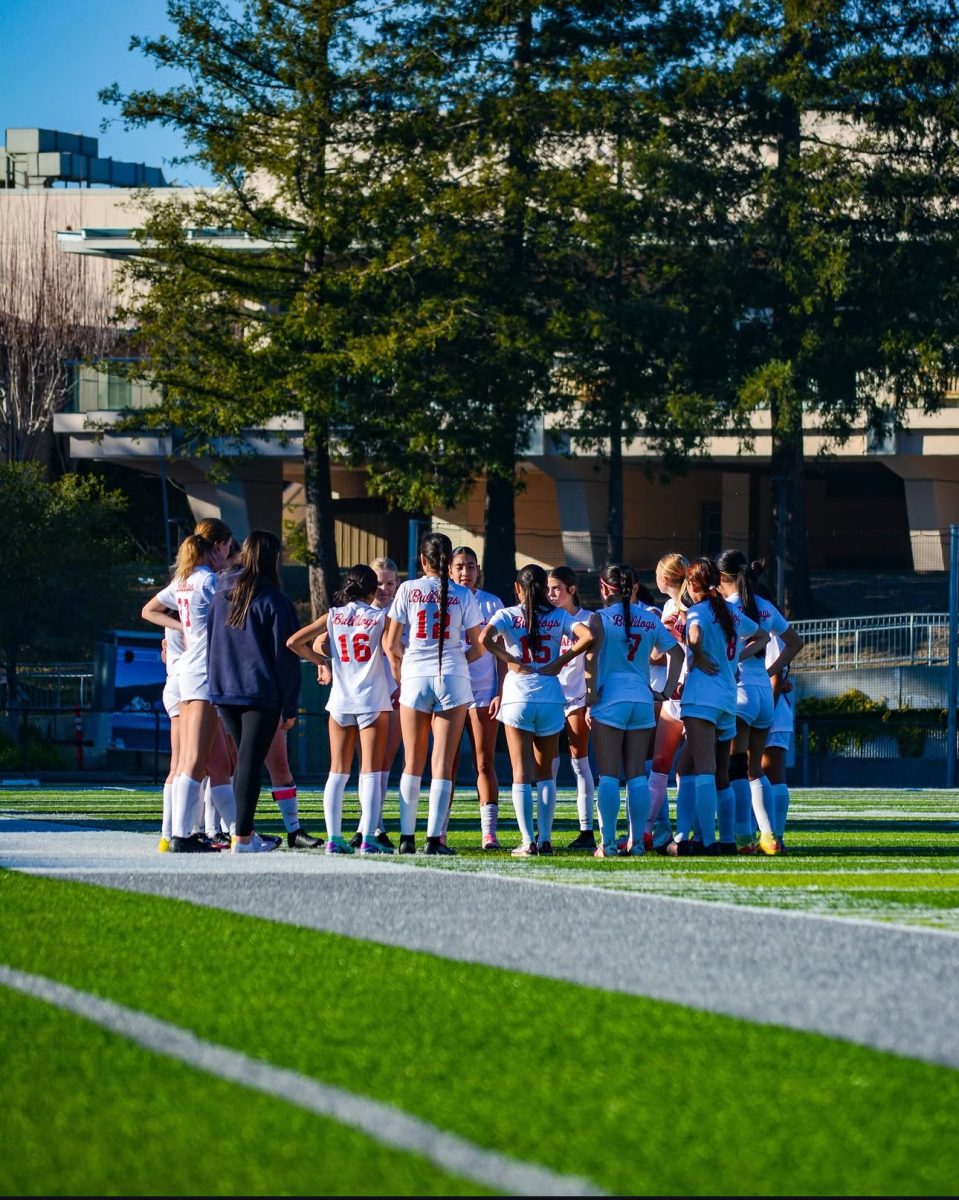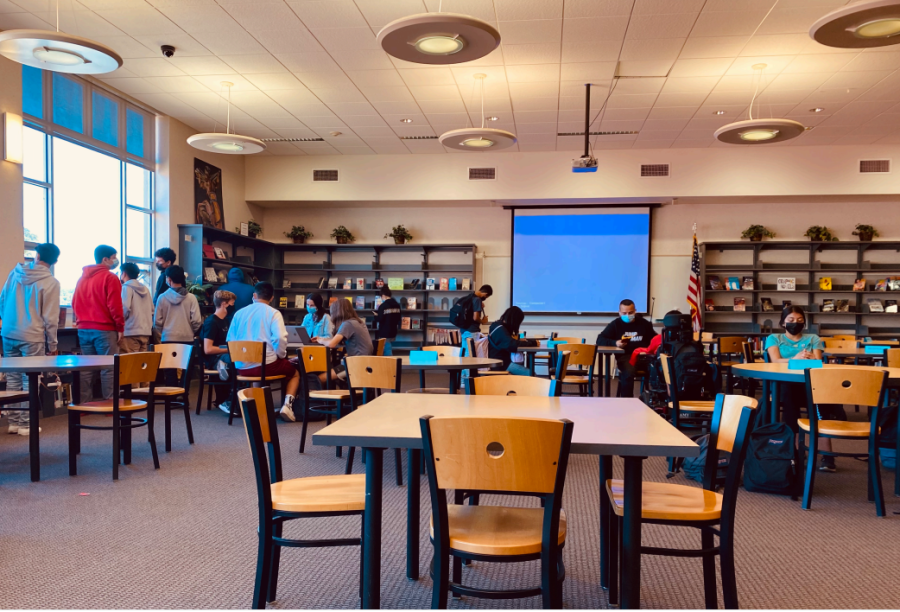SRHS Return to In-Person Learning Sparks Controversy Among Students With Disabilities and Mental Health Issues (TRADUCIDO EN ESPANOL)
October 25, 2021
On March 13th of 2020, classrooms across the country were abandoned in response to the pandemic which has ravaged an estimated 1/500 of our country, according to a study by Johns Hopkins. A two week break from in-person learning became almost a year and half of isolation. After what seemed to many like a century of distance-learning, on August 19th, 2021, San Rafael High School Students returned to classrooms on campus.
The decision to return in person sparked much controversy among the student population, especially those with disabilities. Some students longed to return to their comfortable bedrooms and dreaded having to change out of their pajamas every morning. Others were desperate to get on campus as their mental health declined because of isolation.
SRHS senior Eli Barajas identifies as disabled and says that he has learning disabilities and mental illnesses. Eli said, “School was more accommodating on zoom. Especially with really bad anxiety and social anxiety and depression. It’s hard to get out of bed, do homework and go on campus. Being able to have the option to decide if you wanted to go to class in person or on zoom was a really good step in the right direction that I wish they had kept.” Since the Zoom option was removed, Eli has missed 20 classes.
Sydney Lautter, a junior at SRHS had the opposite experience. Lautter identifies as immunocompromised and is a vocal advocate of in person learning. Lautter said, “It [Zoom] made it very hard to do work and keep up in classes and keep relationships with other students.” She says that being in person has had a positive effect on her sleep schedule. “Before I’d go to sleep at 3 or 4 and get up at 11. Now I go to sleep at the latest 12 and alternate getting up at 7 or 9. I feel like I’m definitely getting more sleep and feeling more energized and am more ready to do things. Over zoom I didn’t have a healthy sleep schedule,” Lautter explained.
Students like Barajas wonder why the district moved away from the hybrid model that was offered at the end of last year. Superintendent Hogeboom said that offering hybrid wasn’t even an option: “We just don’t have the resources to offer necessarily a hybrid approach.” To Hogeboom and the district, coming back was of utmost importance. “We were pushing, always to come back in person as soon as we could. We felt it was an important equity issue. We know students learn better by being in the classroom with a teacher,” Hogeboom explained.
Judy Schwerin, a licensed family and marriage therapist and the Wellness Coordinator at SRHS, agrees with Superintendent Hogeboom that coming back in person was of great importance. “During distance learning there was a lot of isolation and students reporting an increase in stress and anxiety.” Schwerin said. This was especially problematic for students with pre-existing mental health conditions. But returning in person hasn’t been all good, Schwerin said. “We are definitely seeing a little bit of an increase in social anxiety and stress.” As SRHS students readjust to being on campus and deal with the mental health repercussions of the year-and-a-half-long isolation, Schwerin wants students to know that the Wellness team is there for them. Schwerin said, “We will do the best we can to help you manage.”
For students who don’t identify as disabled or mentally ill, coming back in person is less of an issue. Ava Shawn says that while the option to zoom would be nice, she “doesn’t need it.” But even Ava believes that some things have changed for her since the hybrid and Zoom models were discontinued.
“I have a job. I have to factor in travel time from school. I can’t do as much,” she explained. She also says that her sleep schedule has been affected, “I have to get up much earlier now so I’m getting less sleep.” The district did make the decision to start high school schedules 30 minutes later this year, but it seems that decision hasn’t positively impacted students’ sleep schedules as much as they intended.
Covid cases in the SRHS community have been low since reopening, but students, teachers, and staff remain cautious after a Novato COVID outbreak made national news last month. In Novato, an unvaccinated teacher spread COVID to their students and a few of the students’ families. Teachers at SRHS are required to be vaccinated or submit to regular testing. Students with physical and cognitive disabilities and those with chronic medical conditions remain at an increased risk of infection and serious illness, especially those who are immunocompromised, according to the CDC, but without a strong remote program, many are choosing to return despite the risk.
As the year continues, more data about vaccine requirements, cases, and the impacts of in person learning is sure to emerge. Until then, SRHS students and teachers will have to continue to adjust to the new challenges that come with in person learning.
Translation by Jose Lopez Arce:
El 13 de marzo de 2020, las aulas de todo el país fueron abandonadas en respuesta a la pandemia que ha devastado aproximadamente 1/500 vidas en nuestro país, según un estudio de Johns Hopkins.
Un descanso de dos semanas del aprendizaje en persona se convirtió en casi un año y medio de aislamiento. Después de lo que a muchos les pareció un siglo de aprendizaje en línea, el 19 de agosto del 2021, los estudiantes de la preparatoria San Rafael regresaron a las aulas del campus.
La decisión de regresar en persona generó mucha controversia entre la población estudiantil, especialmente aquellos con discapacidades. Algunos estudiantes deseaban no salir de sus cómodas habitaciones y temían tener que cambiarse el pijama todas las mañanas. Otros estaban desesperados por llegar al campus ya que su salud mental se deterioró debido al aislamiento.
Eli Barajas, estudiante de último año de SRHS, se identifica como discapacitado. Dice tener discapacidades de aprendizaje y enfermedades mentales. Eli dijo: “La escuela fue más sencilla por zoom. Especialmente con ansiedad muy fuerte, ansiedad social y depresión. Es difícil levantarse de la cama, hacer los deberes e ir al campus. El hecho de poder tener la opción de decidir si querías volver a clases en persona o permanecer en zoom fue un paso en la dirección correcta el cual hubiera preferido que se mantuviera”. Desde que se eliminó la opción de tomar clases via Zoom, Eli no ha asistido al aula 20 veces.
Sydney Lautter, estudiante de tercer año de SRHS, tuvo la experiencia opuesta. Lautter se identifica como inmunocomprometida y es una firme defensora del aprendizaje en persona. Lautter dijo: “[Zoom] hizo que fuera muy difícil trabajar, mantenerse al día en las clases y mantener las relaciones con otros estudiantes”. Ella dice que estar en persona ha tenido un efecto positivo en su horario de sueño. “Antes me iba a dormir a las 3 o 4 de la madrugada y me levantaba a las 11. Ahora me voy a dormir a más tardar las 12 y alterno levantarme a las 7 o 9. Siento que definitivamente estoy durmiendo más y sintiéndome con más energía y estoy más preparada para hacer cosas. Durante las clases via zoom, no tenía un horario de sueño saludable”, explicó Lautter.
Estudiantes como Barajas se preguntan por qué el distrito se alejó del modelo híbrido que se ofreció a finales del año pasado. El superintendente Hogeboom dijo que ofrecer un sistema de horario escolar híbrido ni siquiera era una opción: “Simplemente no tenemos los recursos para ofrecer un enfoque híbrido”. Para Hogeboom y el distrito, regresar fue de suma importancia. “Estábamos presionando para volver en persona tan pronto como pudiéramos. Sentimos que era un problema de equidad importante. Sabemos que los estudiantes aprenden mejor al estar en el aula con un maestro ”, explicó Hogeboom.
Judy Schwerin, terapeuta familiar y matrimonial con licencia y coordinadora de bienestar en SRHS, está de acuerdo con el superintendente Hogeboom en que regresar en persona fue de gran importancia. “Durante el aprendizaje a distancia hubo mucho aislamiento y los estudiantes informaron un aumento en el estrés y la ansiedad”, dijo Schwerin. Esto fue especialmente problemático para los estudiantes con problemas de salud mental preexistentes. Pero regresar en persona no ha sido del todo bueno, dijo Schwerin. “Definitivamente estamos viendo un pequeño aumento en la ansiedad social y el estrés”. A medida que los estudiantes de SRHS se reajustan a estar en el campus y lidian con las repercusiones en la salud mental del aislamiento de un año y medio, Schwerin quiere que los estudiantes sepan que el equipo de Bienestar está ahí para ellos. Schwerin dijo: “Haremos todo lo posible para ayudarlos”.
Para los estudiantes que no se identifican como discapacitados o enfermos mentales, regresar en persona es un problema menor. Ava Shawn dice que si bien la opción de permanecer tomando clases via zoom sería buena, ella “no la necesita”. Pero incluso Ava cree que algunas cosas han cambiado para ella desde que se descontinuaron los modelos híbrido y Zoom.
“Tengo un trabajo. Tengo que tener en cuenta el tiempo de viaje desde la escuela. No puedo hacer tanto”, explicó. También dice que su horario de sueño se ha visto afectado: “Ahora tengo que levantarme mucho más temprano, así que duermo menos”. El distrito tomó la decisión de comenzar los horarios de la escuela preparatoria 30 minutos más tarde este año, pero parece que la decisión no ha tenido un impacto positivo en los horarios de sueño de los estudiantes como pretendían.
Los casos de COVID en la comunidad de SRHS han sido bajos desde la reapertura, pero los estudiantes, maestros y personal siguen siendo cautelosos después de que un brote de COVID en Novato fue noticia nacional el mes pasado. En Novato, un maestro no vacunado transmitió COVID a sus estudiantes y a algunas de sus familias. Los maestros de SRHS deben vacunarse o someterse a pruebas periódicas. Los estudiantes con discapacidades físicas o cognitivas y aquellos con afecciones médicas crónicas corren un mayor riesgo de infección y enfermedad grave, especialmente aquellos que son inmunocomprometidos, según la CDC.
Sin un programa remoto sólido, muchos eligen regresar a clases en persona a pesar del riesgo.
A medida que avanza el año, seguramente surgirán más datos sobre los requisitos de vacunas, los casos y los impactos del aprendizaje en persona. Hasta entonces, los estudiantes y maestros de SRHS deberán continuar adaptándose a los nuevos desafíos que vienen con el aprendizaje en persona.

